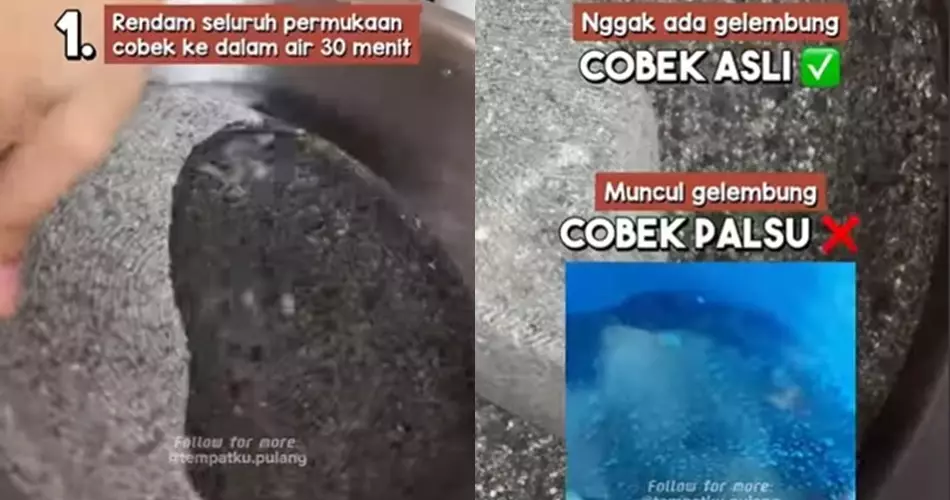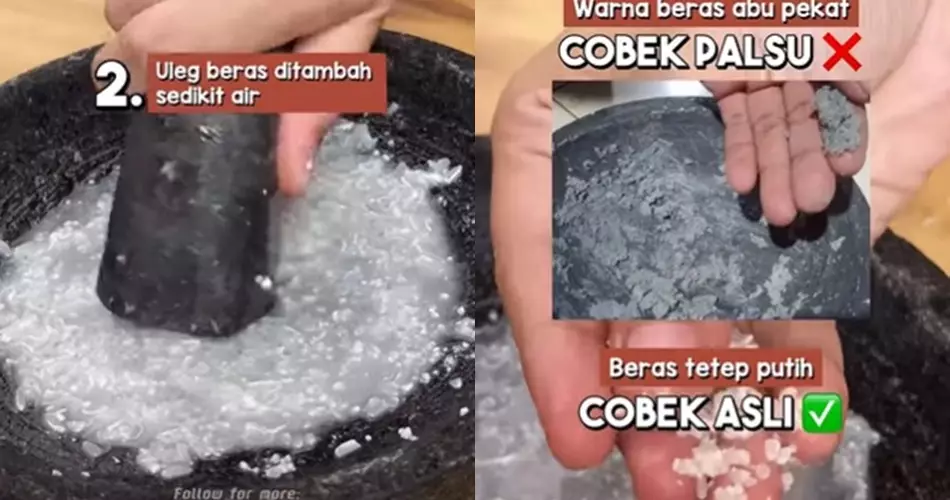Brilio.net - Mortar and pestle is a traditional kitchen tool that is still used today. Many believe that grinding food ingredients with a mortar and pestle produces a more fitting taste and texture than using a blender or chopper. Various types of mortars are available on the market, but stone mortars are the favorite choice because they are known to be strong and durable.
Unfortunately, there are quite a few traders who sell fake stone mortars. Instead of being made of real stone, some mortars are made of cement, which contains harmful substances if mixed with food and enters the body.
A similar experience was shared by a netizen through the Instagram account @tempatku.pulang. For several years, the mortar used was made of cement, without realizing it before. After looking for further information, it was discovered that cement mortars are at risk of causing serious health problems, including cancer, because they contain silica and other carcinogenic substances.
"I actually don't understand this, but when I checked it out, I was really shocked, especially since this mortar has been with me for 2 years," he wrote in an Instagram post @tempatku.pulang, quoted by brilio.net on Sunday (30/3).
To distinguish between real and fake stone mortars, many use the salt grinding technique. However, netizens on the Instagram account @tempatku.pulang shared another method that is no less effective and only requires one kitchen ingredient that is definitely available at home.
How to distinguish between a real and fake stone mortar.The first thing to prepare is a basin filled with water. After that, soak the mortar and pestle you want to check in it. Then, let it sit for 30 minutes. After being left for 30 minutes, the real and fake stone mortars showed different reactions, you know.
If the mortar is genuine, after being soaked for quite a long time, there will be no changes in the soaking water. Unlike the fake stone mortar which shows the emergence of water bubbles after being soaked.

photo: Instagram/@tempatku.pulang
Next, if you are still not sure whether your mortar is made of real stone or fake, you can do one more technique. The method is to sprinkle the mortar with enough rice, then add a little water. Grind the rice until the texture is smooth enough.
If the ground rice remains white without any color change, it means that the mortar you are using is made of real stone. On the other hand, if the rice changes color to gray or blackish, it means that your mortar is made of cement.

photo: Instagram/@tempatku.pulang
Well, from now on you don't need to worry about using the wrong mortar anymore because you now know how to differentiate between a real and a fake stone mortar, right?
How to clean a stone mortar after use.Cleaning a stone mortar to make it clean can be done with a few simple steps. Here are the steps.
1. Soak in mild soapy water.
First, soak the stone mortar in warm water with a little mild soap. Let it sit for a few minutes to soften any stuck-on dirt.
2. Scrub with a soft brush.
After soaking, use a toothbrush or other soft brush to gently scrub the surface of the stone mortar. Be sure to clean all the nooks and crannies.
3. Rinse with clean water.
After scrubbing, rinse the stone mortar with clean water to remove any remaining soap and dirt.
4. Use baking soda.
If there are still stains or unpleasant odors, you can mix a little baking soda with water to make a paste. Apply this paste to the surface of the stone mortar and let it sit for a few minutes before rinsing it again with clean water.
5. Dry with a clean cloth.
After washing, dry the stone mortar using a clean, dry cloth. Make sure to dry the entire surface so that no water remains.
6. Important things to remember when cleaning the mortar.
Avoid using harsh chemicals or rough tools such as steel brushes, as these can damage the surface of the stone mortar.
Tricks to prevent the stone mortar from smelling of chili.
To prevent the stone mortar from smelling of chili after use, there are some simple tricks that can be done. After finishing grinding the chili, immediately rinse the mortar with running water without using soap, because the pores of the stone can absorb the aroma of soap. Instead, use coarse salt or lime pulp to scrub the surface of the mortar, then rinse thoroughly.
In addition, soaking the mortar in warm water mixed with lime juice or vinegar for a few minutes can help remove the lingering odor. After cleaning, make sure the mortar is completely dry before storing it so that it is not damp and smelly. Placing the mortar in a place exposed to air or direct sunlight can also help remove the remaining aroma of chili naturally.
(brl/lut)